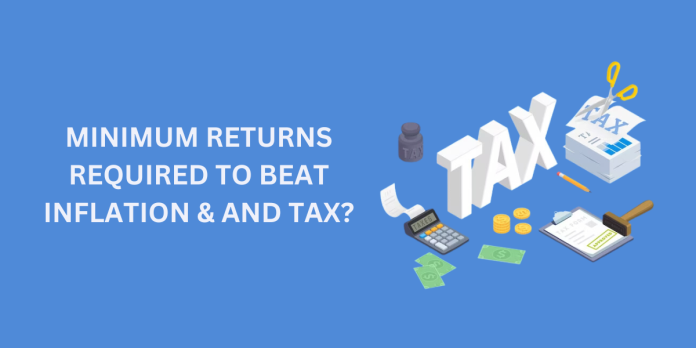When making financial decisions, don’t just look at the headline return. To fully safeguard your financial future and develop your wealth, you must examine the tax-adjusted real rate of return.
Understanding inflation and your returns
Inflation is a monster that eats away at your investment profits. As the cost of living rises, your money buys less over time. As a result, the real value of your wealth will drop if your assets do not outpace inflation.
Aim for a rate of return that covers your investing fees while exceeding inflation to avoid this. This will protect the genuine value of your investments while also preserving your purchasing power.
However, inflation is not the only beast to be afraid of. Taxes can also dramatically diminish the earnings on your investments. Because different tax brackets have different rates, understanding how these rates affect your returns is crucial.
Calculate your tax-adjusted real rate of return to determine how much money you’ll make after taxes.
Based on your tax band (excluding any surcharges that may apply to revenues beyond Rs. 50,00,000), the following table provides the minimal rate of return you need to keep your invested capital safe:
It is crucial to grasp these issues before making any financial decisions. Knowing the required rate of return to retain the real value of your investments, as well as the after-tax income, can help you choose the best investment methods for your needs.
Keeping a close eye on your tax-adjusted real rate of return can also assist you in optimising your investments. You can improve your overall financial performance by minimising the impact of taxes on your returns. This means more money in your pocket and, potentially, a faster path to meeting your financial objectives.
The following table shows the minimum returns you should earn to beat inflation with adjusting tax expenses in the month of November 2023 as the inflation data out yesterday.
|
New Tax Brackets |
||||||
| Amount (in Lakhs) | Up to 3 Lakhs | 3 Lakhs to 7.5 Lakhs | 7.5 Lakhs to 10 Lakhs | 10 Lakhs to 12.5 Lakhs | 12.5 Lakhs to 15 Lakhs | above 15 Lakhs |
| Tax | Nil | 5.00% | 10.00% | 15.00% | 20.00% | 25.00% |
| Effective Tax Rate | Nil | 5.20% | 10.40% | 15.60% | 20.80% | 26.00% |
| Inflation Rate (Nov 2023) |
5.55% |
|||||
| Cess | Nil | 4.00% | 4.00% | 4.00% | 4.00% | 4.00% |
| Minimum Required Rate of Return | 5.55% | 5.85% | 6.19% | 6.58% | 7.01% | 7.50% |
All figures are in %
How to calculate Returns:
Minimum Required Rate of Return = Inflation / (1 – Effective Tax Rate)
Let’s consider that we fall in the 3rd tax bracket of Rs. 7.5 Lakh to Rs. 10 Lakhs where the Tax rate is 10% and Cess 4%. So effective tax rate will be,
- Effective Tax Rate = Tax Rate * (1 + Cess)
- Effective Tax Rate = 10% * (1 + 4%)
- Effective Tax Rate = 10.40%
Now to calculate Minimum Required Rate of Returns we already have formula,
- Minimum Required Rate of Return = Inflation / (1 – Effective Tax Rate)
- Minimum Required Rate of Return = 5.55% / (1 – 10.40%)
- Minimum Required Rate of Return = 6.19%
So, as per calculation, we must earn a return of more than 6.19% to beat inflation and tax payments otherwise we end up eroding our wealth.
Know: Benefits of filing Income Tax Returns
So, don’t just focus on the headline return when you’re making investment decisions. Take the time to calculate your tax-adjusted real rate of return. It’s an important step in making informed investment choices and securing your financial future.


